Truck drivers in earlier decades used to talk about the “skip rolling in” on the radio as they crossed the country, picking up unexpected signals bouncing around the atmosphere from far-away stations — largesse on the airwaves, arriving in their cabs for no obvious reasons, in no clear pattern.
Substitute the word “swag” for “skip,” and you start to understand how mail call feels at Fort Worth Weekly on some days. Over the course of a year, a tide of promotional items — unsolicited, illogical, and mostly underappreciated — rolls into our office.
Marketers, manufacturers, authors, musicians, advertising types, and the occasional inventor send packages our way in hopes that someone at the Weekly will write about their new beer or new store or National Lollipop Day or the latest recipes for fancy popcorn. With the exception of the “new beer” thing, their chances of getting coverage in this paper are thinner than their marketers’ arguments (and the beer writer doesn’t get to share in the brewed goodies that occasionally appear; we’re keeping you pure, Steve Steward).
As editor Gayle Reaves explains patiently (mostly) to marketers who seek her out by phone, we write investigative stories, local “hard news” stories and news features, local arts, entertainment, and restaurant coverage, and not a lot in between. (This story, of course, being an exception to that rule.) If their pizza factory is rife with graft and corruption and needs investigating, she tells the more persistent ones, then we’d be glad to listen.
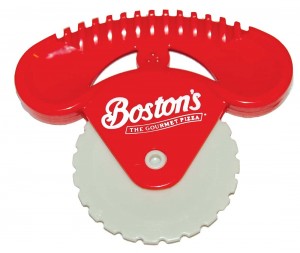
It’s not that we’re complaining. Because we generally don’t write about this incoming and didn’t request it, we have no ethical problem with sharing the often-strange wealth around the office. Now, if we ever do an investigation of the chocolate industry, we’ll have to start sending back those cartons that appear several times a year from a sweetly misguided — and not even local — candy company.
Even though the chocolate boxes are rather generous, there’s not enough to share with our general readership (unless you show up the day they arrive, of course). But at least, we thought, we could share in some of the entertainment, wonder, and in many cases severe puzzlement that a year’s flow of this freebie stream afforded us.
The most frequent mystery involving swag is … why? Why did some marketer think it was worth their clients’ money, for instance, to send out thousands of plastic pizza cutters to news organizations around the country to advertise a restaurant and sports bar? Especially since, at this particular chain joint, the pizza arrives already sliced. Especially since the cutter is so flimsy it couldn’t slice molded Jell-O.
Sometimes the swag makes a little more sense, even if it’s not immediately obvious. One box contained two bottles of beer … and a really nice journal covered in soft leather, in which, presumably, to record our deepest thoughts about the lagers.
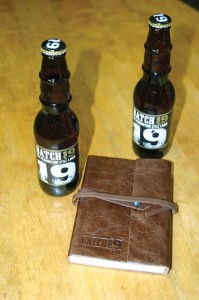
A company representative said the old-school leather journals symbolized the product’s salute to the pre-Prohibition era. Also, the press kits were sent to journalists, so what better way to grab their attention than including journals? For the record, nobody remembers how the beers tasted. We didn’t write it down.
Other times, the accompanying press releases actually contain practical information. How else would we have known there was a day commemorating suckers? The “gourmet” goodies on a stick were, um, interesting. For your planning purposes, National Lollipop Day is July 20.
Promotional items are part of a tradition that goes back to this country’s beginnings. A series of buttons commemorating George Washington’s inauguration as president were issued in 1789 and became what are considered the country’s first swag. Someone with a set of the buttons appeared on Pawn Stars and sold them for $3,000. The value would have been higher but, like many promos, they were made in large numbers.
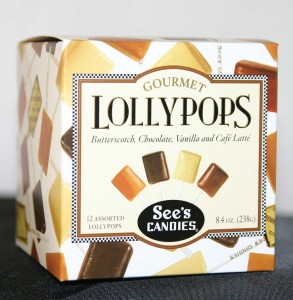
No matter how many buttons George’s minions handed out, they were pikers compared to modern Hollywood promoters. Tinseltown has mastered the art of swag. Weekly film critic Kristian Lin’s work cubicle is filled with bobble-head dolls, posters, complimentary screenplays, and assorted bric-a-brac from movie companies seeking exposure for their latest films. The Campaign starring Will Ferrell and Zach Galifianakis was released in August and turned out to be one funny movie. We weren’t surprised. A month earlier, the movie studio sent an authentic-looking campaign button featuring a headshot of Galifianakis and the slogan “Electile Dysfunction.” Now there’s a phrase for your next bumper sticker.
The use of promo items grew in the 1800s, when household items such as calendars were frequently issued with ads on them. But having to look at an ad for Carter’s Little Liver Pills while planning your day seems positively quaint and naïve compared to a calendar — another movie promo — that landed in the Weekly’s mailbox a few months ago.
We knew Blissful Lies was going to suck before we ever saw it. The movie company’s glossy calendar features the self-conscious cast posing pretentiously on an ornate stairwell in a McMansion.
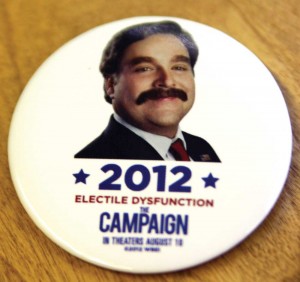
The best swag is inexpensive and yet provides something that people can use and enjoy. After all, none of this stuff was designed with the Weekly in mind — somebody paid, presumably, to send duplicates of it to publications around the country.
“It’s got to be low-cost but provide some kind of lasting value for weeks and months, instead of just getting thrown away,” said Texas Christian University business marketing professor George Low. “It’s a fine line. It takes a certain skill set to really find that sweet spot. It’s got to be a subtle branding. You don’t want to make people feel silly for wearing it or having it on their desk.”
Maybe the folks at Rancher’s Reserve should have attended one of Low’s marketing classes. Rancher’s Reserve may know how to make tender beef, but the swag they send makes them look like a bunch of city slickers. To promote its line of grain-fed beef, the company sent out cowboy hats. Cheap, ugly (make that hideously ugly) black felt cowboy hats with a big Rancher’s Reserve patch sewn on the front. In other words, a hat no self-respecting Texan, cowboy, rancher, or sentient being would wear. Ever.
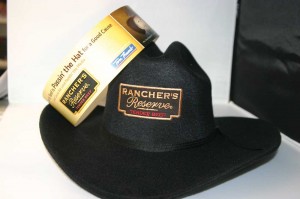
The hat was made by Western Express Inc., which uses a galloping stallion as its logo. A visit to the company’s website reveals that Western Express is headquartered in the authentic cowtown of Bridgeville, Pa.
The real forefather of swag was Jasper Freemont Meek. He published a newspaper in Ohio in the late 1800s and wanted to make money on the side by figuring out ways to use his printing presses off-deadline. As the legend goes, Meek saw a student drop an armful of books while walking to school. That spurred an idea. Meek created the first backpack. He printed the name of a local business on burlap bags and gave them away to schoolchildren.
The kids could carry their books more handily, Meek got paid for his printing job, and the business owner got exposure and goodwill. Meek began printing promotional items for numerous merchants. Imitators followed, and the promo industry exploded into the 1900s. Billions of pens, calendars, cigarette lighters, and household doohickeys adorned with advertising soon followed.
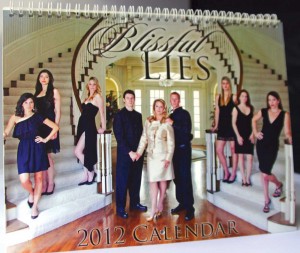
“The kind of swag items you typically see are designed to be long-lasting and a constant reminder, for repeated brand exposure,” Low said. “It’s like an extension of your business card, but business cards tend to get filed away. If it’s something you can put on your desk or carry around with you or put on your refrigerator, then that’s really the objective.”
The swag that arrives at the Weekly almost daily suggests that most marketers don’t do much market research about whom they’re sending their free stuff to. We have yet to get a free snow shovel in a swag box, but we have gotten elaborate boxes of giveaways advertising Memphis as a travel destination (sorry, we don’t do travel stories) and a sizable storage bin full of practical goodies from a major company that was opening its newest home-organizing store in Fort Worth. (Sorry, we don’t do stories on store openings.)
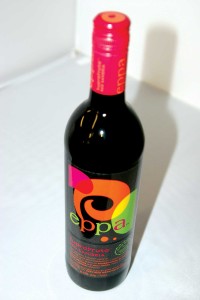
However, Caroline Strand, communications specialist at Paige Hendricks Public Relations in Fort Worth, said that the method in the marketers’ madness is that they figure, even if we don’t cover the industry or product they’re pushing, an ugly black hat might just stick in journalists’ minds, and the next time we need a source on some beef-related subject, voila — Rancher’s Reserve will come to mind. (Unlikely in this case, since we have plenty of homegrown cattle raisers in North Texas to call upon.)
“From a PR perspective, it would just be a way to get their name in front of you,” she said. “If it comes up again, you already have that initial connection. If someone mentions [the product], you’ll think of them.”
We had trouble imagining when the Weekly would write about sangria made in California. But at least the marketers told us that the sangria was sent by a company whose co-founder, Britt West, is a Fort Worth native. So we’ll keep his name in our Rolodex. A story on organic winemaking is at least possible sometime down the road. Score a small point for the marketers on that one.
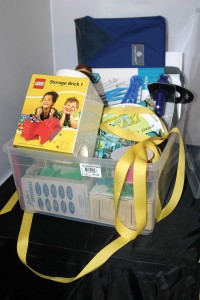
It’s becoming more and more difficult for manufacturers and others to find ways to make their products stand out in the vast media sea. The swag load “is probably exploding at this point in time, just because of the marketing saturation. People are getting messages from all directions in every medium imaginable,” Low said. “Trying to break through that clutter is really a challenge.”
Brumley Printing on Fort Worth’s North Side is riding that rising tide of swag. The printing industry in general has suffered because increasingly cheap and sophisticated printers have allowed people and companies to do most of their own printing. But Brumley’s is doing a healthy trade in pens, calendars, magnets and similar items.
“Printers like us are becoming what are known as MSPs — marketing service providers,” said Kirk Brumley, vice president of sales and marketing. “Now we not only offer print, we offer anything, including promotional items. What people do now is multi-channel marketing — print an item, follow it up with a promotional item, follow up with a mailer. Promotional business has picked up greatly.”
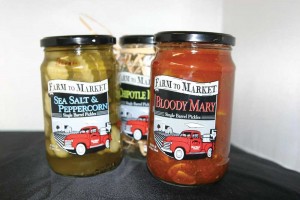
Clearly, the swag is something we have fun with, whether it’s laughing at the ludicrousness, shaking our heads over the expenditures, or dutifully trying the wares sent our way. And sometimes we learn something in spite of ourselves.
We rolled our eyes upon receiving unsolicited jars of Farm to Market Single Barrel Pickles in flavors such as Bloody Mary and Sea Salt & Peppercorn. However, the press release revealed that the new brand of pickles is made by a well-known name in the field, Best Maid Pickles. The company was founded in 1926 — in Mansfield! We’d been eating Best Maid products for decades without realizing the company began right here in Tarrant County almost 90 years ago. We crunched away on dill pickles and swelled with hometown pride. No pickle story though — except this one.



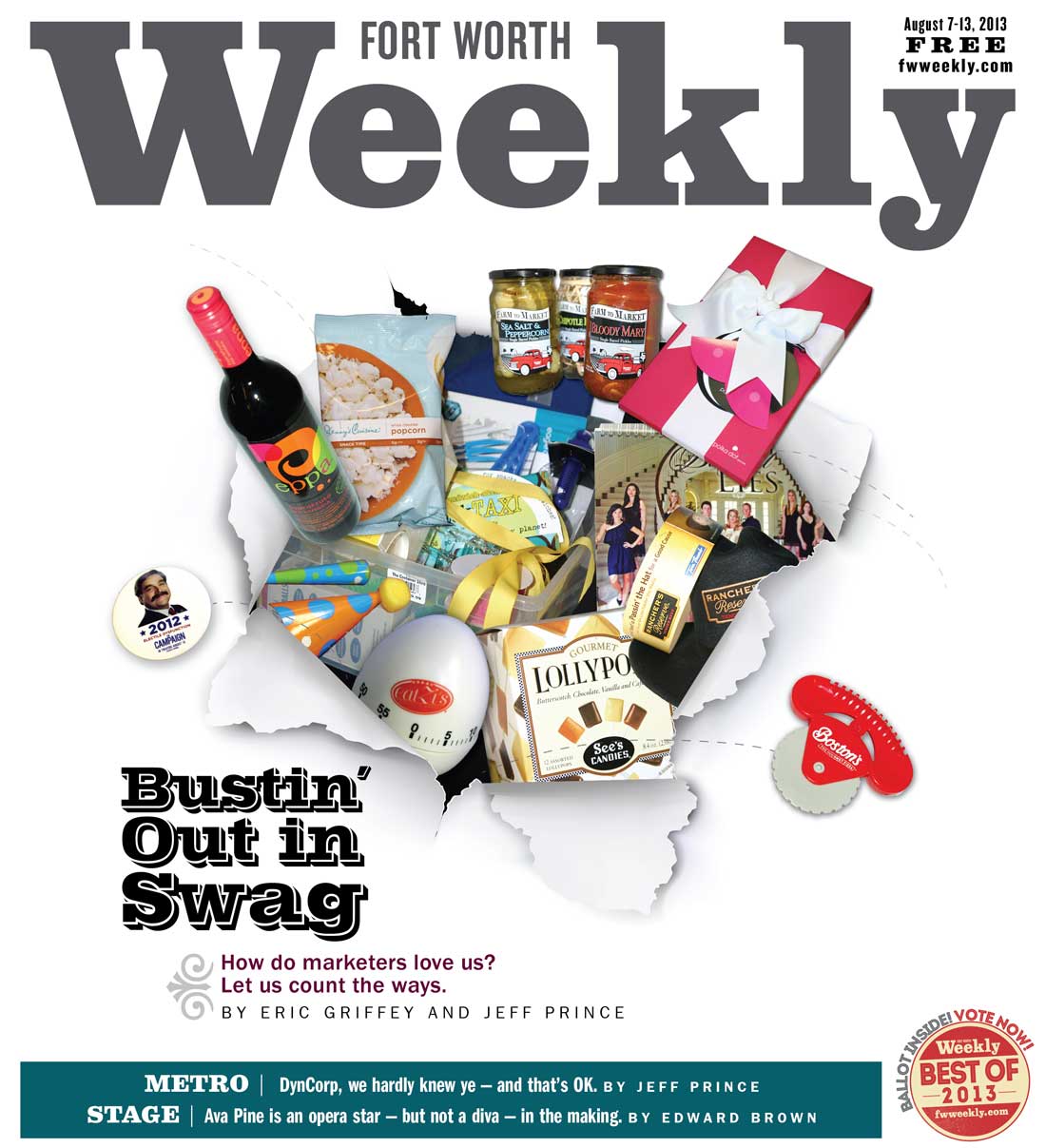









Everyone up here at the Sentinel just got free lemonade coupons from Raisin’ Canes. But exactly where do these lemons come from? Can we even be sure they’re real lemons, and not some kind of psuedo-fruit generated in the secret laboratory beneath the “restaurant”? Does the mafia have their hands in this?
It’s interesting that the week after I send you guys a copy of my new book, OSWALD MISSED!! you run this article. Oh, well; at least maybe someone up there will enjoy reading it while enjoying your bottle of complementary peanut butter-flavored wine.
Sounds like another conspiracy theory
Most papers/websites/etc will pass much of the swag they receive onto readers via contests. Didn’t ya’ll know that?